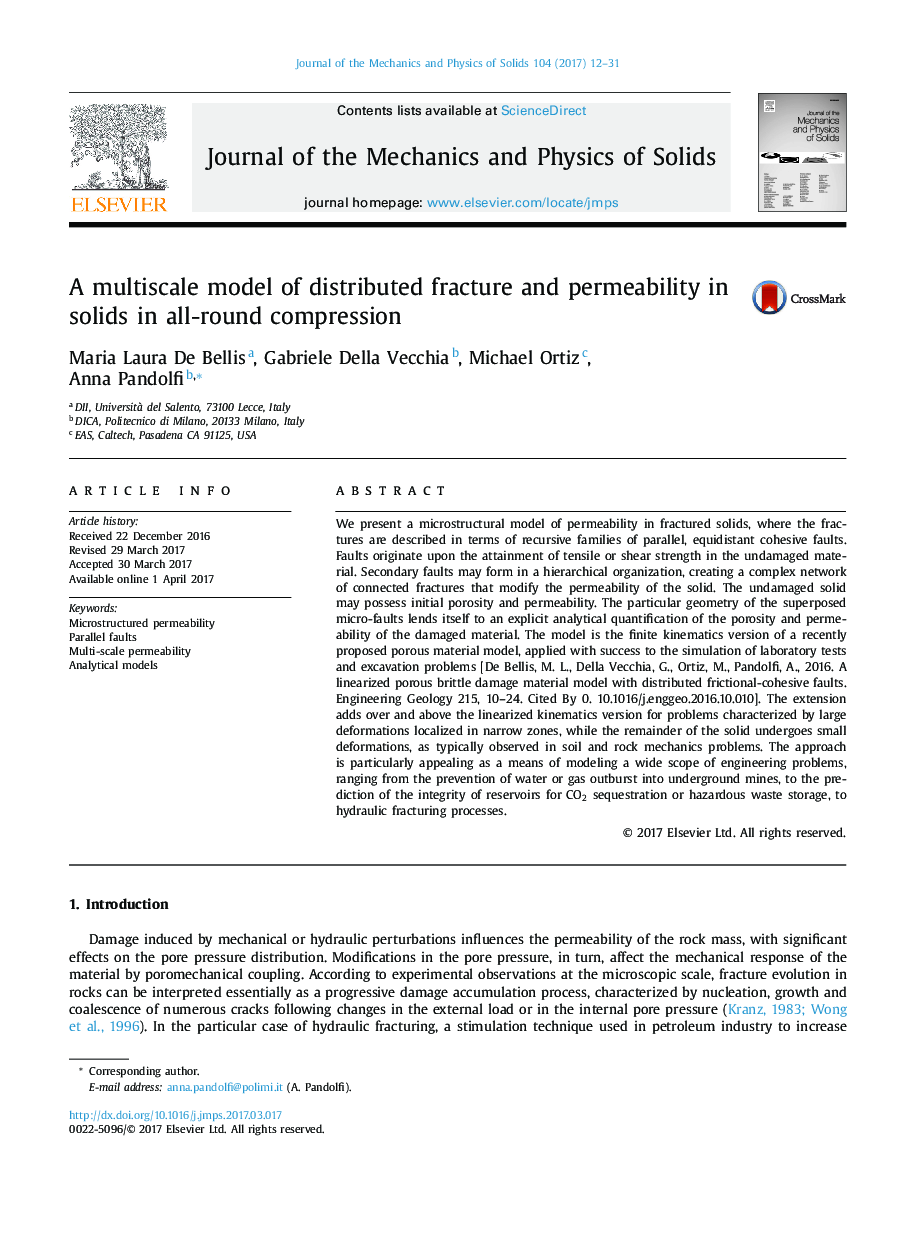| Article ID | Journal | Published Year | Pages | File Type |
|---|---|---|---|---|
| 5018148 | Journal of the Mechanics and Physics of Solids | 2017 | 20 Pages |
Abstract
We present a microstructural model of permeability in fractured solids, where the fractures are described in terms of recursive families of parallel, equidistant cohesive faults. Faults originate upon the attainment of tensile or shear strength in the undamaged material. Secondary faults may form in a hierarchical organization, creating a complex network of connected fractures that modify the permeability of the solid. The undamaged solid may possess initial porosity and permeability. The particular geometry of the superposed micro-faults lends itself to an explicit analytical quantification of the porosity and permeability of the damaged material. The model is the finite kinematics version of a recently proposed porous material model, applied with success to the simulation of laboratory tests and excavation problems [De Bellis, M. L., Della Vecchia, G., Ortiz, M., Pandolfi, A., 2016. A linearized porous brittle damage material model with distributed frictional-cohesive faults. Engineering Geology 215, 10-24. Cited By 0. 10.1016/j.enggeo.2016.10.010]. The extension adds over and above the linearized kinematics version for problems characterized by large deformations localized in narrow zones, while the remainder of the solid undergoes small deformations, as typically observed in soil and rock mechanics problems. The approach is particularly appealing as a means of modeling a wide scope of engineering problems, ranging from the prevention of water or gas outburst into underground mines, to the prediction of the integrity of reservoirs for CO2 sequestration or hazardous waste storage, to hydraulic fracturing processes.
Keywords
Related Topics
Physical Sciences and Engineering
Engineering
Mechanical Engineering
Authors
Maria Laura De Bellis, Gabriele Della Vecchia, Michael Ortiz, Anna Pandolfi,
